Out With The Walt, In With The New
 Admin
Admin A reader of the blog, Michael Linton, sent us this article he wrote in late 2001 for The Weekly Standard. He has seen first-hand the changes Disneyland has experienced ever since he visited Disneyland the first month it opened, 55 years ago.
Keep in mind, this article was written the year California Adventure opened. Remember when everyone was excited for a second park then we all said, "Seriously? Umm, I think I'll stick with the best theme park ever made right over there."? Well it was not too long before this when people started to notice a decline in cleanliness, maintenance, innovation, etc. at all Disney parks. Not many years before this people were fond of Eisner and the work he was doing. What happened? After reading the following article we invite you to revisit an article by Lilly, Why the Decline in Park Maintenance? for more thoughts on the subject.
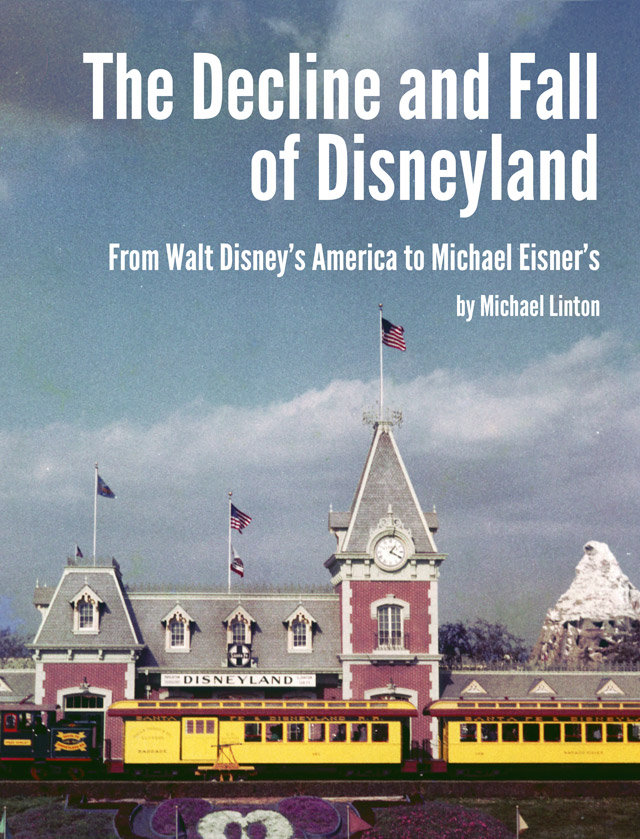
The Decline and Fall of Disneyland
From Walt Disney's America to Michael Eisner's.
by Michael Linton
AT THE BASE of the flagpole that marks the beginning of Disneyland's Main Street in Anaheim, California, rests an unobtrusive plaque. It reads:
"Disneyland is your land. Here age relives fond memories of the past and here youth may savor the challenge and promise of the future. Disneyland is dedicated to the ideals and the dreams and the hard facts that have created America with the hope that it will be a source of joy and inspiration to all the world. July 17, 1955."
These are the words with which Walt Disney opened his remarkable experiment in entertainment almost half a century ago. Today it's more than a bit dizzying to turn around and trudge back across the ticket plaza to the new resort Michael Eisner has built in what was the old Disneyland's parking lot. Walt's Magic Kingdom now shares the block with Eisner's California Adventure, and the distance between the two is much further than the seventy yards between them would suggest.
Like Disneyland, Eisner's park is divided into theme areas. Furthest from the entrance, and dominating the park's skyline, is "Paradise Pier." There's a roller coaster called "California Screamin'," a Ferris wheel, a boardwalk, and some carnival thrill rides. A raft ride, marking the middle of the "Golden State" section, gets you wet cascading down the slopes of a Sierra Nevada peak reminiscent of the grizzly bear on the California state flag. There's a mini-section with a big-screen flight simulator that wings you over bits of California scenery (the innovation here is aromatic: Over forests and orchards we get bits of appropriate orange or pine scent). "Pacific Wharf" is a food court complete with a microbrewery and patio for wine tasting. The "Hollywood Pictures Backlot" is a street of 1930s-style false fronts with theaters for stage shows and films and more places to get hot dogs. Abutting the park on the west is the new Grand Californian Hotel and a half-mile shopping mall called "Downtown Disney."
The expanded Disney empire in Anaheim has been long in coming. Ever since the opening of Disneyland in the 1950s, Walt and Roy Disney resented the dozens of hotels--of various grades of cheesiness--that grew on the park's perimeter, and they resolved not to repeat their mistake of buying too little land when Disney World was planned in Orlando. Meanwhile, back in California, the Disney brothers negotiated with the city of Long Beach for an Epcot-like park on the city's waterfront (where they already owned the Queen Mary and the Spruce Goose), but nothing materialized.
Now, under Eisner, the company has joined with the city of Anaheim to develop 1,100 acres around Disneyland. Disney bought out the businesses that bordered the park to the west, expanded its hotels, built the "California Adventure," and put up huge parking garages--all at a price tag of $1.4 billion. And the expansion isn't over: The Anaheim city council approved in concept a third theme park for Disney last July. It's not just Disneyland anymore. It's now the "Disneyland Resort."
FUNNY. As kids growing up in southern California we never thought of Disneyland as a resort. Baden-Baden and Palm Springs were resorts. But Disneyland was a kingdom. It was, in fact, a kingdom celebrating American optimism. It's easy to read those words Walt Disney spoke at the park's dedication as so much blather. Disneyland was and always has been a business. Walt--and especially his older brother Roy--were wizards at marketing. And when looking at Dumbo it's hard to know just what Disney meant by "hard facts."
But Disneyland became such a part of American culture because it celebrated--more eloquently than any other institution of the postwar period--the notion of the American Dream. It wasn't as much an amusement park as a morality tale. Remarkably, when it opened there were no thrill rides at all (the Matterhorn bobsleds weren't added until the 1960s).
Instead there were attractions about Snow White and Mr. Toad and Peter Pan, in each of which the visitor experienced the story through narrative, architecture, music, and technology. The stories always taught something--like the lesson that outward beauty or ugliness could be deceiving (as with the stepmother and the dwarves in "Snow White"). And good always triumphed.
The morality tale extended to American history. On the paddle wheeler Mark Twain the visitor was floated past frontier woodlands. A mine train took visitors through the arid southwest. Main Street was an idealization of Teddy Roosevelt's America, a thoroughly midwestern nation that had plowed the prairies and defeated slavery and was now busy preaching its gospel of can-do optimism from Puerto Rico to the Philippines. In Tomorrowland that gospel reached its millennium. There was the "house of the future" (made almost entirely of plastic), and freeways where kids could drive without traffic jams, and rockets to fly to the moon. The past was something Americans could be proud of--and the future was bound to be even better.
Disney basically continued his original vision with the park's additions. The Matterhorn, inspired by the company's movie on the heroic mountaineers who first climbed the Swiss peak, housed the park's first roller coaster. Tomorrowland was updated along polished steel lines, to include a futuristic monorail and "people mover," both seen as models for urban development. But the most important additions--the capstones to Walt's Anaheim venture--were exhibits originally shown at the New York World's Fair: "Primeval World," "It's a Small World," the "General Electric Carousel of Progress," and "Great Moments with Mr. Lincoln."
All of these attractions made spectacular use of Disney's innovative "animatronics," paving the way for what was to be the park's most popular attraction: "Pirates of the Caribbean," which opened only months after Walt's death in December 1966. Abutted to the original park's Grand Canyon diorama, "Primal World" presented a land of dinosaurs based upon episodes of "Fantasia." The "Carousel of Progress" told the story of the growth of American prosperity in four vignettes. "It's a Small World" celebrated how nice kids were (and featured the catchiest and most annoying tune Disney ever produced). Finally there was Mr. Lincoln holding forth from the Main Street Opera House.
And Disneyland was beautiful. The paint was always fresh, the walks and streets spotless. Disney banned alcohol, in part because it contributed to public disorder but also because he thought it symbolically served to divide parents from their children, and Disneyland was about the unity between generations. Families with children, grandparents, teens out on dates, and even newlyweds all felt at home in Disneyland. And despite the cost (Disneyland was always pricy), I don't think that I ever remember anyone really resenting the expense.
OF COURSE it was corny. And much of it untrue. The idyllic main streets that sponsored fraternal orders like the Knights of Pythias also hosted the Ku Klux Klan. Despite the tune, it's not a small world but one characterized by cultures deeply antagonistic to each other. The fairy tales Disney popularized were much grittier and more ambiguous than their Disney versions. Floating through Disneyland's jungle ride in 1969 it was impossible not to think of booby-traps and Viet Cong. And Walt was himself not the harmless uncle his Burbank PR staff portrayed him as, but a visionary autocrat who was known to drive his staff as hard as himself.
Nonetheless, much of what Disneyland stood for was true. Life really is a struggle between good and evil. There are people who actually are heroes. There is no danger to the nation more to be feared than that brought upon it by the corruption of its own people. And this is a deeply beautiful land in which life could be rewarding and fun, and for which we should be thankful.
Eisner's California Adventure shares none of these qualities. Most of the attractions are amusing but pointless ("Soaring over California" presents a few minutes of splendid views, but without any narrative, the film might as well have been shot over Morocco). The thrill rides are no better than what's found at two dozen other amusement parks across the country, lacking innovation and imagination. And the park isn't even pretty. The replica of the Golden Gate Bridge that marks the new park's entrance is cramped. The food court is housed in a complex that looks like a decrepit Cannery Row. Disney even seems to have lost its way with lights. At night the illuminated Paradise Pier isn't as pretty as Long Beach's now demolished Pike was forty years ago. It's even dirty. Trash floats in the lagoons. Litter lies uncollected on the walkways. And it's overpriced. At an adult admission fee of $43--the same as for admission to Disneyland--we feel less like guests than rubes.
Or like members of a market niche. It's not quite true that California Adventure tells nobody's story. It--together with the entertainment-merchandising-information behemoth Disney has become--tells the story of a culture obsessed with getting richer through ever-greater market-share and niche exploitation. By far the most physically attractive part of Eisner's addition is "Downtown Disney," a pedestrian street offering tens of thousands of square feet for hawking Donald Duck key chains, Snow White costumes, and Mickey Mouse T-shirts. Eisner hasn't put a plaque here yet, but I know what it will read: "It's the economy, stupid."
December 5, 2001, would be Walt Disney's one-hundredth birthday, and the company he founded has marked the centenary by spectacularly repudiating one of his greatest gifts to the country. It's enough to make Mickey weep.
 California Adventure,
California Adventure,  Disneyland,
Disneyland,  Walt Disney
Walt Disney 

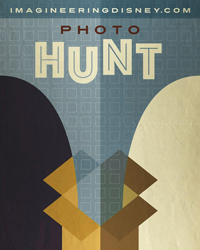

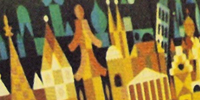
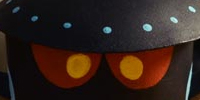
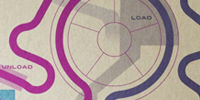
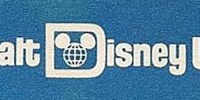
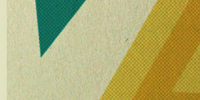
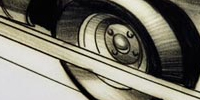
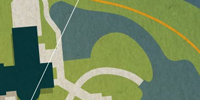
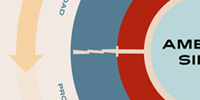


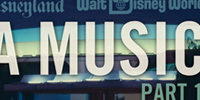
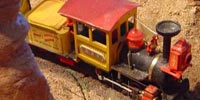
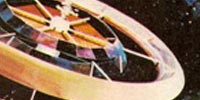
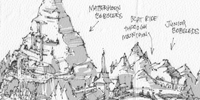
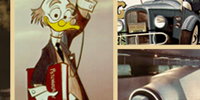
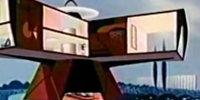
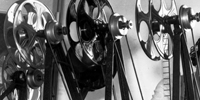
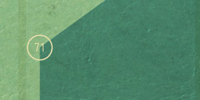
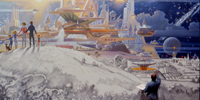
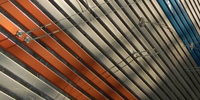

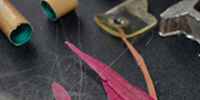
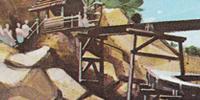
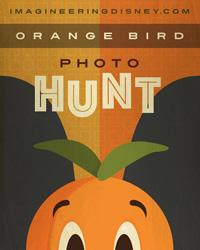
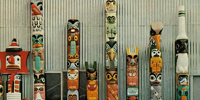
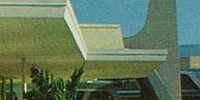

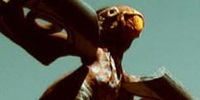

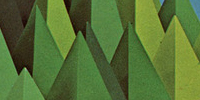
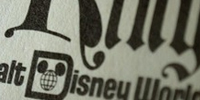
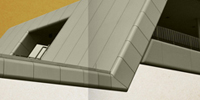
Reader Comments (17)
I just have to say that Michael Linton seemed very jaded and flat out rude about what the Disney company set forth to do with DCA. Would it have changed anything to have the entire park renamed? Would that make people less inclined to complain about not learning about CA's history? No one seems to remember the theater that is now home to the little mermaid that had an entire show devoted to CA. In fact most people didn't even go to it. So perhaps we should re-title that article to "I want another replica of Disneyland." Disney only tried to replicate their success, not the idea of a duplicate Disneyland. The simple solution if you don't like it is to stay home....
On a side note I do agree that the cleanliness of the parks is horrible. Disneyland in particular.
Really, more DCA bashing. That always seems to be the fall back position; realy easy and will always get a certain faction of fans all worked up. Nothing much going on so republish an article from about 9 years ago criticizing DCA. No real criticism of DL in that article even though at the time, the park was hitting a real low with very poor management.
Where is the comparison of early Disneyland to early DCA. How about the Hall of Chemistry and other underwhelming early elements of Disneyland. Don't get me wrong; DCA was extremely flawed but things have changed and there is reall improvement going on. He really diminishes Soarin' (I hate all the slang that was part of DCA 1.0) even though this attraction still gets a huge round of applause every time I have been on it.
Maybe now we can now complain about how much Pixar is in the park too!
I really like this article regardless of when it was written. It's more than just 'DCA bashing'. Can we not intelligently express our views of something we love/dislike?
Here's the thing about comparing early Disneyland to early DCA. Let's remember that theme parks like we know them today did not exist back then. In the decades since Disneyland opened innovation has grown a ton and a ton of ideas have been developed. Yeah, a few duds will always exist in any new park. But can't a new park be a little better and emotionally impacting than DCA was or is? Yes. Think of Epcot Center when it opened. It was nothing like Magic Kingdom but it was fantastic and didn't look cheap. Tokyo Disney Sea is another example of a fantastic park that was nothing like any other park. And they were fantastic the day they opened. (Yes, I know they had a lot of money to work with...).
I like what the author wrote. He's been there since the beginning and it's a valuable discussion piece. Rock on, Mr. Linton.
PS: Maybe we should complain about the excess of Pixar in the parks! Let's not. Good point about Soarin' getting a huge applause. It really does, thought I get the point he was making.
Oh and one more thing. I've noticed this site has been pretty positive lately with great posts about what they like about the disney parks. Though most of those things happen to be old, they're still being positive.
Nobody says DCA is 100% lousy. But overall it lacks.
THe author of this article says "it wasn't as much an amusement park as a morality tale." He explains the deeper meaning to Disneyland compared to other parks. Nicely written. And I agree.
I believe most of our regular viewers enjoy learning about, remembering, and discussing the old days of Disney. Some of those people like the new days as well. But I'm glad there are all types of people who visit. It makes for fun discussion.
As for posting an article from 9 years ago, there's a reason. We get a lot of articles and letters sent to us that we do not post. This specific one reminded us of the early days of California Adventure when it was all pretty new to everyone. And for those of us who grew up with Disneyland, the Disneyland Hotel, the parking lot, and not much else on the property, DCA was a big deal. Big in some good ways and big in some bad ways. The bar was set really high. Tokyo Disney Sea opened the same year and it looked amazing. Animal Kingdom which opened less than 3 years earlier was coming along nicely. We had high expectations even when we didn't compare it to Disneyland. There were other Disney creations that set high standards. I mean, how can you REALLY compare it to the one-and-only Disneyland?
We wanted to feel some of the same things we felt at Disneyland, yes. I personally didn't expect to SEE the same things I saw at Disneyland. A few parts provided great feelings but so many parts made me feel like I was at a cheap amusement park.
All in all, I'm happy to see that after a few years, DCA is going to see some amazing changes that will make it feel a little more like a lot of us think it should.
I grew up with Disney as a "resort" so I'm used to it. But yes I can imagine what it would be like to have Disneyland change so suddenly. That would suck. But California adventure, is kind of boring. Also I never really notice if DIsneylnad is clean or not, because I have been to Knotts berry farm and on their log ride there is a tunnel with old chewed gum on it. Its disgusting. Seriously. So for me Disneyland is really Magical. Plus I think its pretty clean too. :) SO lets not bash on DCA, they have world of color now. Yay!
Anne has a point. If you grew up with Disneyland one way then suddenly it is changed that could be tough. Also let's keep in mind, like someone mentioned before, there were other designs proposed for that space that would have been better than what we got. Specifically "Westcot"
http://disneyandmore.blogspot.com/2008/03/westcot-project-artwork-and-special.html
People argue that Westcot would have been too costly. But when you show the public one thing then after it doesn't work out you build something far less significant, it's a letdown.
Westcot would have been cool. People might not have liked it as mush as Epcot but the designs looked awesome. Parts of DCA are also cool. Another concept presented to the public was Disney's America, intended for the east coast. It's cool that some of the ideas were incorporated into DCA.
I've been thinking a lot about DCA since reading this article and have come to a couple of conclusions: Even the biggest critics of DCA like a few things about it. But most people who understand what makes Disney parks great, regardless of how much they like DCA, find that significant portions of that park are sub par and do not align with what makes Disney parks great. Anyway, a lot of that is being fixed. That's good. Meanwhile it's fun to talk about these things.
World of Color looks cool from the Youtube videos I've seen. And it's got some of the old school mixed with the new school.
Let's remember one thing about DCA. It's something that was built the way it was because upper management (Michael Eisner and co.) had an agenda that was far different than that of the early days of Disneyland. Although you can easily draw parallels between the early days of the two parks, DCA was a whole other beast. I've heard many Imagineers complain that they had to build the thing the way they did because the way managent was running the show. Great ideas that would have made it a much better park were floating around but were never green-lit for one reason or another. Even Marty Sklar was unhappy with the park. This is the guy full of excuses of why a lot of good things can't happen (city of EPCOT, etc.). Even HE thinks the park stinks on many levels.
But here's to the new 1920's Southern California-style "Main Street" area of the refurbished DCA coming soon and the Little Mermaid ride. I think these two additions will take the park up a few notches. That red trolly will be great as well. The removal of the giant post card look at the front of the park is a wonderful thing. Cars Land might be cool. And making the Grizzly Peak area resemble the early days of our national parks as opposed to the current high-adventure style will be cool. That mood will work nicely there. I'm optimistic the park will be pretty fantastic in ten years or so. Too bad these kinds of things weren't introduced when the park opened. Better late than never, I suppose.
Interesting article, and I can identify with all of the observations and criticisms of Disneyland. It is idealized, and it is fantasy, but it is the contagious optimism of the park's creators and the near-seamless execution of their vision that resulted in so many attractions that are not only timeless - the Jungle Boats, Haunted Mansion, Pirates among these - but are cultural icons themselves.
That's a tough act to follow, and Walt's original park sets a high standard. California Adventure could never be Disneyland South, but - even without the changes the current makeover promises - there were and are many things I liked
- The tranquility and beauty of Soarin' Over California
- The artistry in Disney Animation
- Cooling off at Grizzly River Run (and perhaps, heading back to the hotel to change afterward)
- The wide streets and paths with enough room for strollers and kids
- The Electrical Parade - transplanted, but really at home in this bigger venue
- The magic of Aladdin at the Hyperion
While I agree with the original author - I can't imagine paying full fare to visit California Adventure as a destination - in the near decade since we've been visiting both parks during our vacations in Southern California, I now can't imagine the 'Disneyland experience' without California Adventure. And I'm looking forward to seeing the changes currently underway!
I really appreciate the readings y’all gave to this old article and the time y’all took to write about it (I’m been living in Tennessee long enough now so I can write “y’all” honesty). But I think I wasn’t as clear as I should have been since my point didn’t come across as well as I hoped (two letters to the editor in the Weekly Standard didn’t like the article either, they said that they loved Disney World and Epcot—yep, Disney World and Epcot, sometimes you’re amazed at what people think they’re reading). I’m sorry and I’ll try to explain a bit.
The Disneyland that Walt invented (and apparently Roy organized) is one of the great artistic accomplishments of post-war America (along with Saarinen’s TWA terminal at Kennedy Airport, Breuer’s St. John’s Abbey in Collegeville MN, etc., and yes I’m not joking). At its time Disneyland was unique in its conception, beautifully balanced in its design, meticulous in its maintenance (at least publicly), and “deep.” Here’s some of what I mean by all that.
If you’ve ever been to Coney Island, think about it. Now think about entering Disneyland. The view down Main Street to the Castle is an almost Jungian model of our wish to move from the ordinary to the magical (no “almost” needed, it is a Jungian model of that archetypal condition). In that sense, it isn’t outrageous to see that view as very much like the view down the nave of a medieval cathedral, across the transept, to the glimpsed choir and sanctuary. Of course this is pushing the notion, but it’s a view from the secular to the sacred (and it has never been explained to me why the Castle, in contradiction to Neuschwanstein and every medieval castle I know, has a chapel that prominently rises above the battlements—interesting touch). And just as in a medieval cathedral, the architecture of the Main Street “pulls” you to the castle, pulling you to the “sacred”, with that pull briefly retarded by brief side attractions (which, at least in this case, function like the side chapels of that medieval cathedral). Let the sun set and then turn on the lights. It’s breathtaking. In 1962 there was nothing like that in the world. And that view certainly bore no relationship to Coney Island or the Pike in nearby Long Beach. None at all.
On another point, there was an original thematic and even physical symmetry between the attractions that took up Disneyland’s most real estate: the Mine Train Ride in Frontierland and the Jungle Cruise in Adventureland. One was a boat ride through a jungle with wild beasts and the other was a train ride through a desert—with wild beasts (but smaller). These both were rides through lands of scenic beauty and physical danger (the Jungle Cruise originally wasn’t a litany Borsch-belt jokes and the Mine Train Ride wasn’t a rollercoaster). The physical beauty was sometimes purposefully comic (as in the balancing rocks of the great American Desert) and the physical danger feigned (and silly, as in the Jungle Cruises’ “rapids”), but they were still taken somewhat seriously. Of course these were the lands of the Hollywood matinee and the Disney nature films, but they were nearer too: I remember riding in the mine train with my grandmother who really had driven a team of oxen pulling a Conestoga wagon to her homestead and the guests who saw the Africans “spring up” spears in hand threatening the boat were also reading about the Mau Mau uprisings in Kenya—those exotic frontiers and adventures weren’t quite so distant then.
These attractions based upon stories, and so many others—Tom Sawyer, Peter Pan, Pinocchio--were ancestral tales and laced themselves across the culture of America. They were deep. And that depth was immediately recognized. It didn’t need to be explained at length. The American of the 1950’s and 60’s understood it.
It was for a good reason that Khrushchev wanted to see Disneyland on the most important foreign visit during the Cold War. And it somehow seemed deeply appropriate to stand next to my parents on the steps up to the depot on Main Street and watch ex-president Eisenhower take his grandson, David, by the hand down Main Street (this must have been in early 1961—the historians in the group will know the date). Eisenhower showing his grandson Disneyland. Of course. They belonged there. Disneyland really was about the words that Walt had put in bronze on that plaque. It was a very serious and well-planned business venture (and a triumph of planned construction), it was great fun, but it was more than those things; Disneyland was Inspirational. And it was Moral (purposeful capitals)—the entire park was a Gesamtkuntwerk of morality tales told so that they might inspire. It’s deep. Deep enough to brighten the imagination of a five year old and deep enough to sustain decades of thought.
My problem nine years ago when I wrote about the new California Adventure for the Weekly Standard was that the new park exemplified everything that Disneyland wasn’t.
Eisner’s CA reflected the triumph of Harvard Business School corporatism. The bottom line is calculated every quarter. Wring whatever resources you have for maximum profit and minimum expense. Since you can eventually make more money on a new attraction than you can out of a parking lot, put in the new attraction. Don’t sell anything that doesn’t have a Disney logo on it. Fix things when they break down, prevention is possibly a needless expense. And imitate. Real invention takes time and is costly—and frequently requires artsy types who can be prickly. So quick, copy. Copy the Pike at Long Beach. Knott’s Berry farm has a Sierra themed flume. Copy it. The Ahwahnee is a great hotel in Yosemite. Copy it. Just pull in the cash. Now.
CA struck me as a pretty blatant expression of simple corporate greed. No, not simple, stupid corporate greed. It was a way to get people to the now "resort" and not let them out until they'd been sucked dry by an additional day in the new park in the old parking lot. And now, thinking about CA nearly a decade ago, I can’t help but put Eisner’s Disney in the same pot as ENRON, and GM, TWA, Arthur Andersen, and more recently hundreds of banks (but not Goldman Sachs, of course)—all companies that forgot what they were supposed to be. The fact the Disney still exists I think is due less to the decisions of Eisner and his board than to the strength of the material the Disney brothers left them to work with.
From the Silly Symphonies on, Walt Disney was about fun (of course he was about a lot of other things too, but this will do for now). But his fun was frequently for the purposes of inspiration. Disney, just not Disneyland, but Disney, was supposed to be inspiring (Okay, hard to think what “Pirates of the Caribbean” inspires us to but it’s the exception that somewhat proves the rule). CA nine years ago wasn’t inspirational. And it has to be. It can be something else: it can Six Flags over Whatever, Dollywood, Cedar Point, King’s Island—but it can’t be Disney.
My life has taken me in different directions and I haven’t been back to southern California since I wrote that review. And the new work on CA looks interesting. Y’all will have to tell the rest of us how successful it is. But I have to ask myself if the one thing the President of Russia would want to see in American would just be California Adventure—because that’s how high the bar is—at least one of the bars. I very much doubt that. But there’s another bar, a bit higher. I’ve sat with three generations of my family on a bench over looking the Mark Twain landing and talking with cast members and PR people from corporate Disney. In fifty years, will another family—grandpa, son, grand daughters—sit at a spot in California Adventure and think of their past visits to that spot in California Adventure, how thankful they are to be together, and how much they love each other?
That’s a really high bar, but it’s the bar that Walt and Roy set; I’m pretty certain that will happen at Disneyland in fifty years, but I’m doubtful about California Adventure.
For more directly minded business types, California Adventure is, or at least was, bad for Disney because it weakened the brand.
"Meanwhile, back in California, the Disney brothers negotiated with the city of Long Beach for an Epcot-like park on the city's waterfront (where they already owned the Queen Mary and the Spruce Goose), but nothing materialized."
The article said things many believe and have already said, but this part was simply incorrect. Walt and Roy never negotiated anything with Long Beach, and their company was much too small to even try (Roy was barely able to get WDW off the drawing boards and EPCOT almost bankrupted the company). The DisneySea/Port Disney concept in Long Beach was not put forward until the late 80s, when the resurgent Eisner-led Disney bought the Wrather Corp (mainly to get the Disneyland Hotel) and got the Spruce Goose and Queen Mary there as part of the deal. At the same time Westcot was to be built in the Disneyland parking lot, and before the DisneySea concept may have been put forward for Long Beach, but I'm not entirely sure as the Disney's California expansion was filled with byzantine political and economic intrigues. The fact is the original DisneySea concept was an Eisner project, though it would take the Japanese to get it built right.
As for Eisner and the death of Disney-type design and theming, Animal Kingdom is an Eisner park and is quite beautiful, only underbuilt attraction-wise.
Dear Walter: Thanks for the correction about the Long Beach/Disney connection, I might have gotten that time-line wrong although I remember talk in Long Beach of some sort of partnership with Disney on the waterfront as early as the 1970's (something had to be done with all the oil money the California Supreme Court ruled had to be spent on the ocean side!), but I might be wrong there.
I've never been to the Animal Kingdom; my comments are all on the California attractions.
Have you been to Morocco? I have and it's beautiful. I wouldn't mind seeing a Soarin' Over Morocco!
While I have arrived very late to this party, I cannot help but agree with the comments made by Mr. Linton regarding the early days at DCA. My first visit to the park about 8 years ago left me extremely underwhelmed.
While some attractions, namely Soarin' & Screamin' were exciting, the remainder of the park offered little in originality or draw. I could get nearly identical attractions by visiting the nearby "Lagoon" park in Utah and others a bit farther away. Some attractions made little sense (Example: the fun of the "swings" is the view, so why enclose them in a giant orange?). While they are great for nostalgia, they were not worth leaving the Magic Kingdom and most definately not the purchase price of a second ticket.
I am happy to report that having visited both parks again recently, my lackluster perceptions of DCA have been changed. Attractions like "The Little Mermaid", "Cars Land", and "Bug's Land" have brought back the sense of whimsy and adventure that drew me to Disneyland worlds as a child. "World of Color" was sheer magic. Granted, versions of this have been done before, though I not to such a massive scale. I know Disney purists hate the prevalence of Pixar elements, but even I got a bit excited walking down the streets of Radiator Springs. Many of the photos I took look like screenshots from the film! Most importantly, my kids were immersed in these worlds in a way that brought back my own childhood memories.
While my time was limited and I was unable to explore all aspects of the new park, I left with the impression that Disney is finally getting things right in that particular venture.
Thanks for pipping in Ed; glad things are better and that you enjoyed your visit.